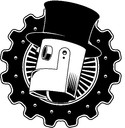Version 1.7 a new dawn
lecture: Attribution revolution
Turning copyright upside-down with metadata

Re-using works licensed under Creative Commons seems pretty simple, but it can often be quite time consuming. One image might be okay, but keeping track of the license and attribution of a thousand images in your mashup, or when quoting from massively crowdsourced data sets such as Wikipedia? Whoah! Don’t we have computers to do that for us!? We do – but there’s no widespread support for including licensing or author information when sharing or reusing digital works. This session will discuss how this should work in the open knowledge environment.
Re-using works licensed under Creative Commons seems pretty simple, but it can often be quite time consuming. One image might be okay, but keeping track of the license and attribution of a thousand images in your mashup, or when quoting from massively crowdsourced data sets such as Wikipedia? Whoah! Don’t we have computers to do that for us!? We do – but there’s no widespread support for including licensing or author information when sharing or reusing digital works. This session will discuss how this should work in the open knowledge environment, and could it be that many problems regarding copyright and "piracy" in our digital society could be solved with the right technology?
Let's take a step back and consider how we perceive photographs that we see, online and offline. Didn't you ever want to know who took that awesome photo that you scrolled past in a blog? Or find out more about where that image on Twitter or Facebook comes from? Finding this information for digital photographs can be a daunting task! Sometimes I don't even remember myself where a photograph I took was taken!
Most people have a drawer of black and white photographs at home, a collection of the family history. A very natural reaction when you take a photo, which most people can also relate to, is to turn it over and look at the back of it, hoping that someone -- a parent or grandparent perhaps -- have written on the back of the photo when it was taken, where and who's pictured. The information scribbled on the back represent the context of a piece of art; it's what gives the photograph meaning and value. Metadata is the digital equivalent of your grandmothers handwriting -- giving meaning to pieces of art. By persistently associating the metadata of a photograph with the photograph itself -- making the metadata "stick" -- we can even make sure that your grandmothers handwriting stays with the photograph, even when someone photocopies just one side of it. Assuming the technology makes this easy, of course.
Very recently, we've seen the emergence of technology enabling someone to copy a photograph from a web site, insert it into an editor, and have that editor automatically pick up the associated metadata and provide the correct attribution and licensing information. This has been made possible with the Creative Commons Rights Expression Language (CC-REL), other RDFa metadata, and a clever way of passing information between applications on the clipboard.
In order to relate effectively to the digital works we see online, attribution (who made or built something) matters. It is obvious that proper attribution is the currency of the information age, and it's the start of being able to explore digital works online in their right context. This talk will focus on the philosophical background of why attribution matters, the benefits that technology can bring to the way we work with pieces of art (lolcats and Shakespeare alike), and where we're heading in the future.
Info
Day:
2014-12-30
Start time:
12:45
Duration:
01:00
Room:
Saal 2
Track:
Art & Culture
Language:
en
Links:
Files
Feedback
Click here to let us know how you liked this event.
Concurrent events
Speakers
| Jonas Öberg |